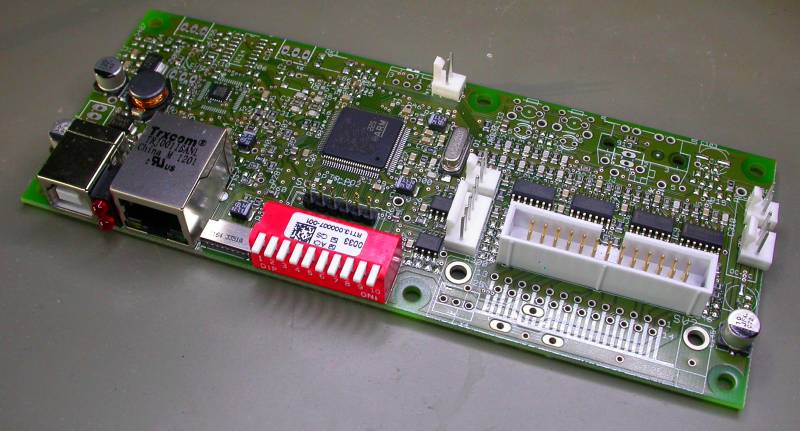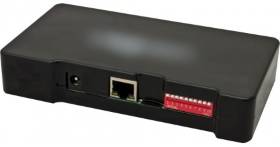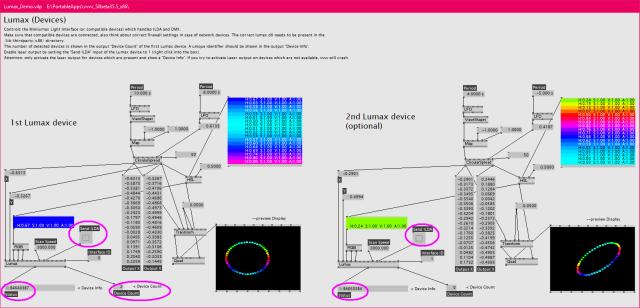(Works for both MicroNet Slim and LumaxNET interfaces. Flashing a firmware file will not turn a MicroNet Slim device into a LumaxNET device and vice versa.)
| v1.10 | |
Test-Tool v1.12
DLL v1.12 |
- Improved laser output smoothness (no frame drops or repetitions any more) in combination with new firmware 20140222
- Ability to import license keys
- Increased maximum number of interfaces from 8 to 16
- Reconnect after loss of connection works even if a new IP address is assigned
- Bugfix: Reliable auto detection also when a huge number of interfaces is connected
|
| Test-Tool v1.13 | -
Fix issue with new processor revision in operating mode with several devices. Re-flash the firmware using this version of the Test-Tool to fix network problems.
|
| DLL v1.14 |
- Fix malfunction of DMX output introduced with DLL version 1.12
|
| DLL v1.16 |
- Support for build-in XTEA encrypted dongle function in combination with new firmware 20140822
- Fix malfunction of DMX output introduced with DLL version 1.12
|
| DLL v1.17 |
- Basic support for USB API with devices using the open license
- Improvements in streaming mode
- New vendor IDs
|
Test-Tool v1.22
DLL v1.22 |
- Added compatibility with new hardware revisions
- Possibility to configure DMX/ArtNet operating modes
- Possibility to configure scanrate for SD card playback
|
| Test-Tool v1.25 | -
Administrator functions for devices with enhanced privileges
|
Test-Tool v1.26
DLL v1.26 |
- Added compatibility with bootloader 20160811
- Developer option: advanced stream playback modes
|
Test-Tool v1.28
DLL v1.28 |
- Developer option: support for additional lasershow software
|




